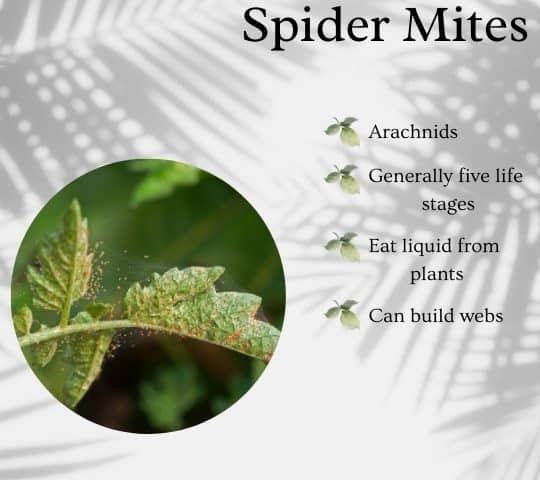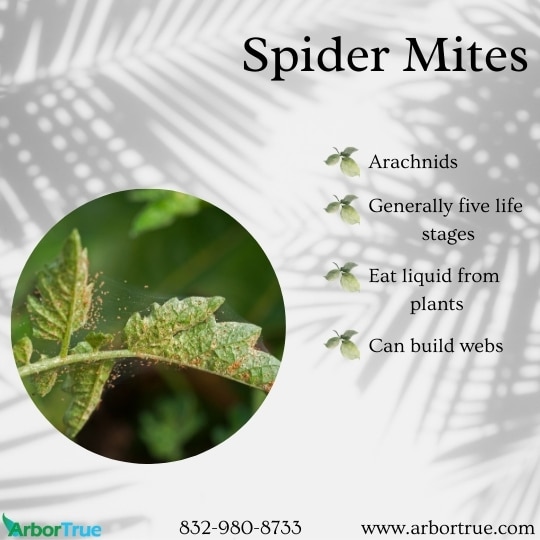
Benefits of Trees
December 13, 2023
Mushroom Monday: Dryad’s Saddle
December 18, 2023

Spider Mites
Spider mites are a common creature in the garden. They can live on hundreds of different kinds of plants and there could be hundreds of them in a single colony. In today’s post, we thought we’d tell you about these interesting little creatures.
First, spider mites are not insects. Although it can be easy to think of all little crawling or flying things as insects, that’s not really accurate. There are a number of different creepy (or not so creepy) crawlers (or flyers or walkers or whatever) and not all are insects.
Spider mites are arachnids. They are in the same class as spiders and ticks. They have eight legs as adults, their bodies are divided into two parts, and they don’t have antennae. They are very small with some species being less than 1/50″ in length as adults (although the females can be larger than the males), and they can look like small dots when they move. They are hard to see just with your eyes, but can be seen if you use a magnifying glass. Although there are a number of different species, they are similar in a lot of ways.
Generally, spider mites go through five life stages. They start as eggs, that turn into larvae, that turn into the first nymph stage, that turn into the second nymph stage, that finally turn into adults. This whole life cycle can be completed in a number of days to a few weeks depending on the species and conditions.
Spider mites eat by cutting plant cells on leaves and needles and sucking out the liquid from inside. This can cause small white or yellowish specks on plants. If they eat enough, the leaves can turn yellowish or a bronze color and could even fall off. This can be harmful to plants and could even kill them. The damage caused can look similar to stress from drought. On some plants the damage can cause flowers and leaves to be distorted.
Although spider mites can eat a number of different kinds of plants, there are a number of different things that eat spider mites. Predators include some lady beetle species and some other mites.
Although not all spider mites build webs, the webs are part of the reason for their name. When webs are seen, it is a sign there are a lot of spider mites on a plant.
One common spider mite is the twospotted spider mite. They have a lot of the characteristics noted above. They are yellowish/orange with a spot on each side of their bodies. They make their colonies under leaves and they multiply faster when the weather is warmer and dryer. It can be common to see infestations when the summer is hot and dry and they can be found on a number of common garden plants. They do better on plants that are already stressed. Their eggs are sphere shaped, translucent, and very small. A generation can develop in a week or less under the right conditions.
If you liked learning about spider mites, we also have posts about other little creatures. Check out our recent post Orb Weaver Spiders and our one about Creating a Haven for Bees.



